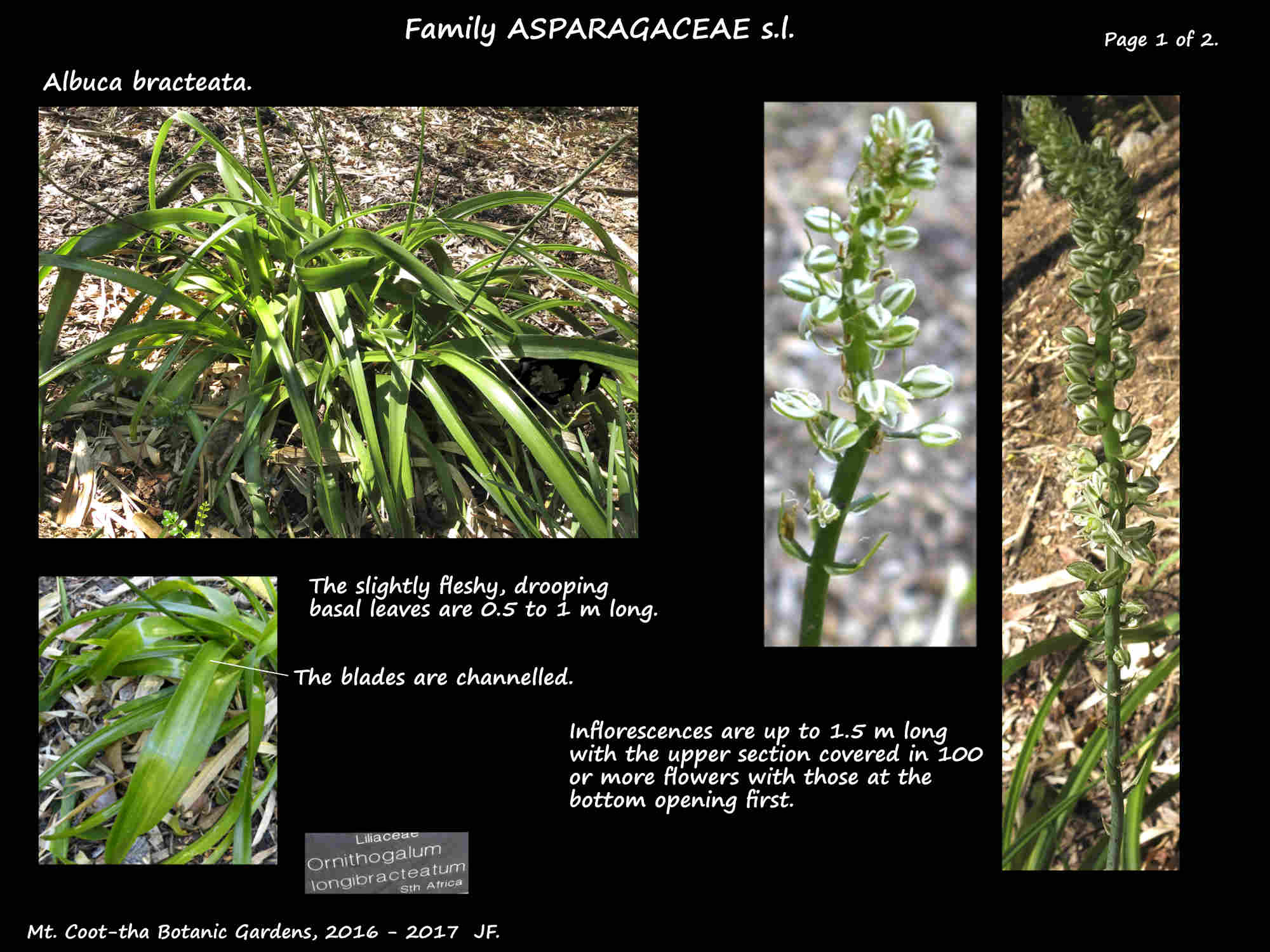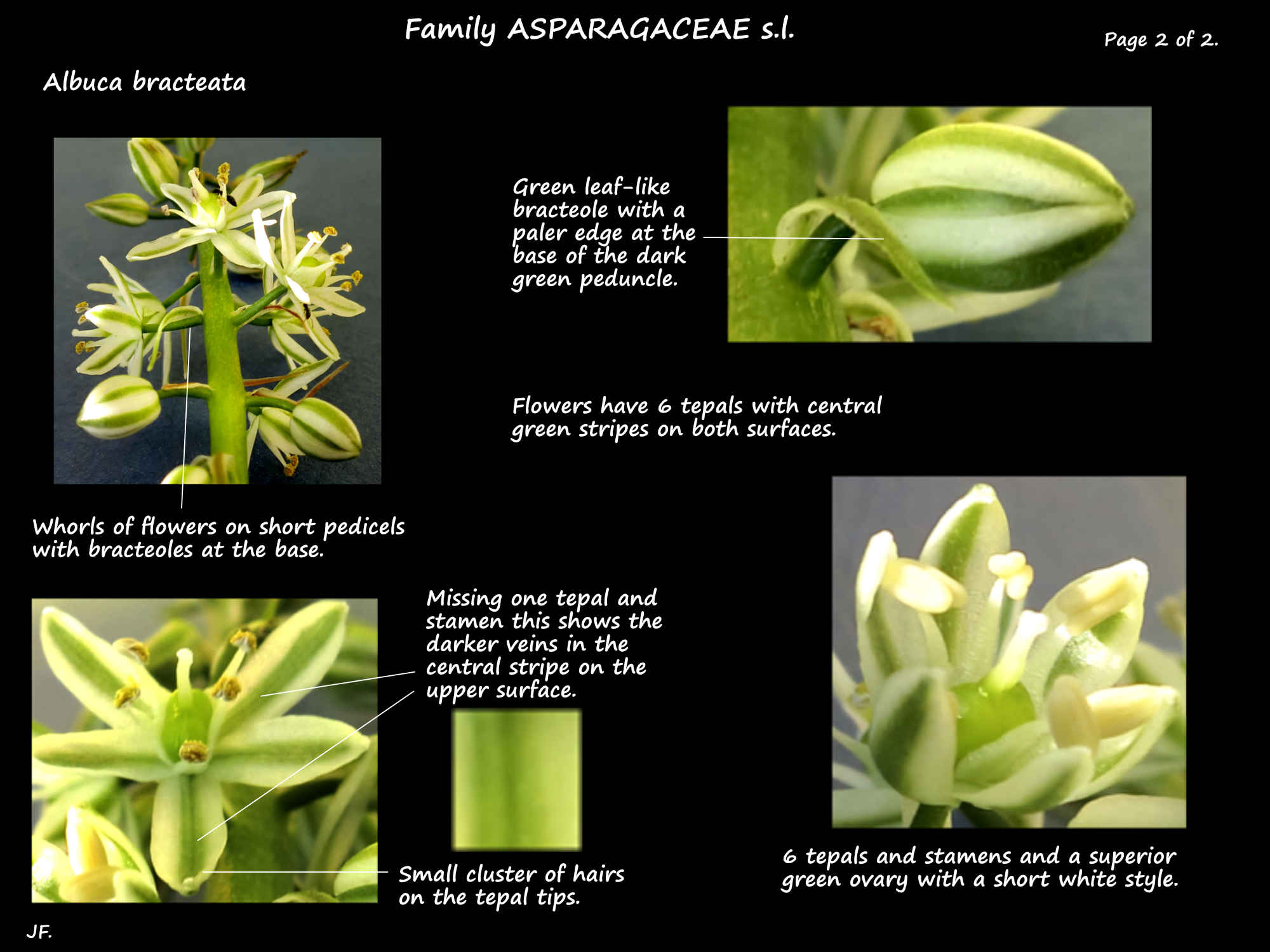Albuca bracteata.
The Pregnant Onion or False Sea Onion is native to South Africa.
In Family Asparagaceae, it was previously known as Ornithogalum longibracteatum and O. bracteatum.
It is mainly seen as a house plant because of its interesting bulb.
The bulb, around 6 to 8 cm across, sits mostly above the surface of the soil.
The spherical to ovoid bulbs have a smooth pale green surface that ages to a grey-green.
The fleshy white roots at the base are surrounded by numerous small bulbils.
These fall off and produce new plants resulting in tight clumps.
Around 8 drooping, strap-like leaves grow from the bulb forming a basal rosette.
They are bright green, slightly fleshy and from 0.5 to 1 m long with a tip tapering to a point.
The closely spaced, sheathing bases are up to 5 cm wide.
The leaves die off each year.
The smooth, erect leafless inflorescence stalks are up to 1.5 m long.
The upper 15 to 30 cm of the scape has 100 to 300 small flowers that open from the bottom up.
In whorls of three the flowers are on 5 mm long pedicels that are horizontal to ascending.
At the base of each pedicel is a lanceolate bracteole from 1 to 4 cm long.
Each plant can flower twice a year.
The flowers have 6 elliptic white tepals in two whorls.
The tepals are just under 1 cm long and around 2.5 mm wide.
They have a green stripe on both surfaces and the upper surface has darker green veins down the stripe.
At the tips are small hairs and glands.
The 6 stamens, in 2 whorls do not extend past the perianth.
One whorl has lanceolate filaments and the other three have broad basal appendages.
The superior ovary has 3 locules with numerous ovules.
The style is only a few mms long.
The fruit are green spherical to ovate capsules up to 1 cm long with 3 ribs.
The dark oblong seeds are 4 mm long.
J.F.



